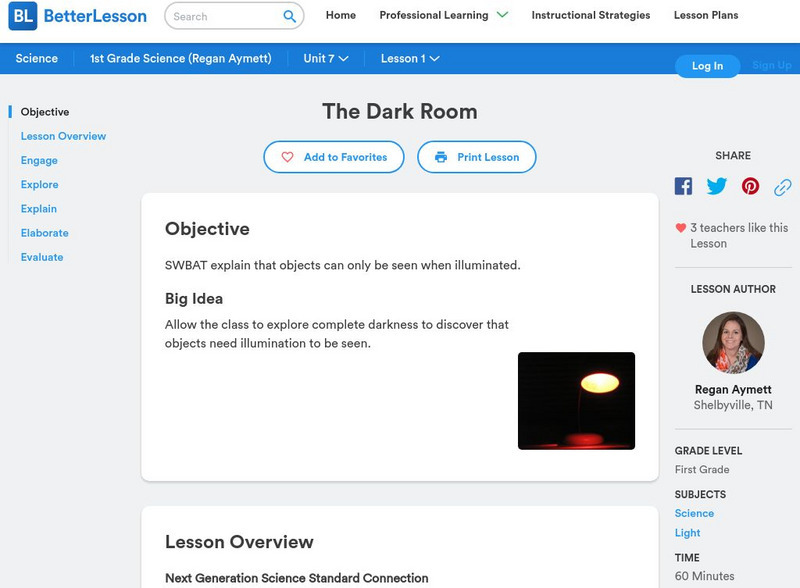Hi, what do you want to do?
PBS
Pbs Learning Media: Move That Math: Lesson Plan
Combine addition of numbers identified from playing cards with physical activity to engage students and increase overall fitness. This lesson plan describes a twenty to twenty five minute series of activities that require two decks of...
Better Lesson
Better Lesson: Collision Course (Part 2)
This is part 2 of a two-part lesson on understanding how speed changes when two objects collide. Students will conduct an experiment, collect data, and draw conclusions about the changes in energy that occur when objects collide....
Physics Classroom
The Physics Classroom: Newton's Laws: Double Trouble
Through the use of free-body diagrams and Newton's laws, students analyze the motion of two objects together.
Physics Classroom
The Physics Classroom: Vectors: Inclined Planes
Through examples and interactive practice problems, this physics tutorial helps students understand how forces behave on an object on an inclined plane.
Better Lesson
Better Lesson: The Dark Room
This lesson allows the class to explore complete darkness to discover that objects need illumination to be seen. Students will make predictions, plan an investigation, and carry out their experiment in the classroom.
Library of Congress
Loc: For Teachers: Classroom Materials Using Primary Sources
This excellent teacher resource features lessons that use primary source documents in an engaging way. Included are lesson plans created by teachers, themed resources, primary source sets, presentations and activities, and collections...
Harvard University
Harvard Smithsonian: Everyday Classroom Tools
The focus of this series of lessons is to engage students in an exploration of the world around them. The emphasis is on inquiry as students learn about the earth, sun, light, shapes and more.
Smithsonian Institution
Smithsonian in Your Classroom: Teaching With Collections [Pdf]
This lesson is great for young learners who like to collect things. It gives you ideas of ways to teach such concepts as classifying, sorting, arranging, multiplying, graphing, and measuring with collections of simple objects.
Department of Defense
Do Dea: Spreadsheet Software: M4: L4: And This! Inserting Objects and Content
In Module 4 Lesson 4 of this course on spreadsheets, students learn how to insert text, graphics, and charts into a spreadsheet. They will learn how to import and export data and images between different types of documents. Includes a...
Better Lesson
Better Lesson: Use a Non Standard Unit to Measure
In this lesson students will use color tiles to measure classroom objects.
Physics Classroom
The Physics Classroom: Reflection and Ray Model of Light: The Line of Sight
Students explore this simple physics principle: In order to view an object, you must sight along a line at that object; and when you do light will come from that object to your eye along the line of sight.
Physics Classroom
The Physics Classroom: Refraction and the Ray Model of Light: Converging Lenses
The purpose of this tutorial is to summarize object-image relationships by dividing the possible object locations into five general areas or points.
Physics Classroom
The Physics Classroom: Static Electricity: Neutral vs. Charged Objects
With this interactive tutorial, students explore the basic terminology and concepts of neutral and charged objects.
Physics Classroom
The Physics Classroom: Circular and Satellite Motion: Speed and Velocity
In this interactive module, describe and explain the motion of objects that either move in circles or can be approximated to be moving in circles. Kinematic concepts and motion principles will be applied to the motion of objects in...
Physics Classroom
The Physics Classroom: Static Electricity: Lesson 3: Inverse Square Law
Electrical force between two electrically charged objects is inversely related to the distance between the two objects. Investigate why this becomes the inverse square law of physics. Engage in the Coulomb's Law interactive and check...
Physics Classroom
The Physics Classroom: 1 D Kinematics: The Big Misconception
An introduction to the ideas behind the misconception and misunderstanding of why all objects accelerate at the same rate. This explanation involves the concepts of force and mass.
Physics Classroom
The Physics Classroom: Thermal Physics: What Is Heat?
This physics tutorial is devoted to understanding how the relative temperature of two objects affects the direction that heat is transferred between the two objects.
Physics Classroom
The Physics Classroom: Sound Waves and Music: Natural Frequency
Through animations, videos, and text, students discover that all objects have a natural frequency or set of frequencies at which they vibrate.
Physics Classroom
The Physics Classroom: 1 D Kinematics: How Fast? And How Far?
Students understand the physics of a free falling object through these illustrated example problems.
Physics Classroom
The Physics Classroom: Static Electricity: Lesson2 Grounding Removal of a Charge
How do objects become grounded? Probe into the science behind "grounding" objects by removing an electric charge. Explore the Charge Interactive and test understanding with the three follow-up questions.
Physics Classroom
The Physics Classroom: Static Electricity: Lesson 2: Charging by Friction
Understand how to electrically charge an object by friction with this detailed description. Classrooms will benefit by extending the lesson with the interactive opportunity and follow up for comprehension with the "Check Your...
Physics Classroom
The Physics Classroom: Static Electricity: Lesson 3: Coulomb's Law
Pay close attention to the three variables between two charged objects, Coulomb's Law is the quantitative expression of these variables. Understand the purpose of the law and extend the understanding through Coulomb's Law Interactive...
Physics Classroom
The Physics Classroom: Newton's Laws: Finding Individual Forces
Through illustrated examples and interactive practice problems, students find the value of forces acting upon objects using force equations.
Physics Classroom
The Physics Classroom: 1 D Kinematics: Meaning of Shape for a v T Graph
This physics lesson involves a study of the relationship between the shape of a v-t graph and the motion of the object.










